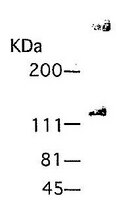CP17 MilliporeAnti-Collagen Type I Mouse mAb (I-8H5)
Produits recommandés
Aperçu
| Replacement Information |
|---|
Tableau de caractéristiques principal
| Host |
|---|
| M |
| Biological Information | |
|---|---|
| Immunogen | purified, human collagen type I |
| Immunogen | Human |
| Clone | I-8H5 |
| Host | Mouse |
| Isotype | IgG2a |
| Concentration Label | Please refer to vial label for lot-specific concentration |
| Physicochemical Information |
|---|
| Dimensions |
|---|
| Materials Information |
|---|
| Toxicological Information |
|---|
| Safety Information according to GHS |
|---|
| Safety Information |
|---|
| Product Usage Statements |
|---|
| Packaging Information |
|---|
| Transport Information |
|---|
| Supplemental Information |
|---|
| Specifications |
|---|
| Global Trade Item Number | |
|---|---|
| Référence | GTIN |
| CP17 | 0 |
Documentation
Anti-Collagen Type I Mouse mAb (I-8H5) Certificats d'analyse
| Titre | Numéro de lot |
|---|---|
| CP17 |
Références bibliographiques
| Aperçu de la référence bibliographique |
|---|
| Karsenty, G., et al. 1991. J. Biol. Chem. 266, 24842. Mayne, R. and Burgeson, R.E. 1987. Structure and Function of Collagen Types, Academic Press, Orlando, FL. Weiner, F.R., et al. 1987. J. Biol. Chem. 262, 6955. Kreig, T., et al. 1985. Ann. N.Y. Acad. Sci. 460, 375. Laurent, G.J. 1985. Ciba Found. Symp. 114, 227. de Wet, W.J., et al. 1983. J. Biol. Chem. 258, 7721. Borsch, A.S. and Byers, P. 1981. Proc. Natl. Acad. Sci. USA 78, 5141. |








